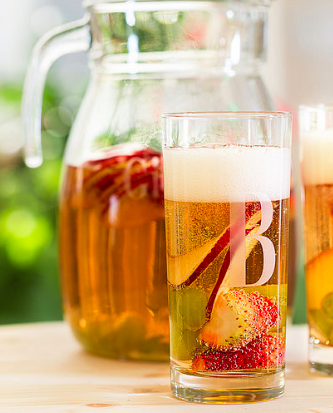Podcast: Play in new window | Download (Duration: 13:08 — 18.1MB) | Embed Subscribe to Spark My Muse Apple Podcasts | Spotify | Email | TuneIn | RSS | Subscribe to Spark My Muse
Hey! Thanks for coming to the website. I’m thrilled at how well the show has been doing. Thanks for listening to Spark My Muse. I had to share this cool photo (below) with you. Yep, it’s from iTunes! I’m officially “popular” and YOU made that happen. Thank you!
One thing that is still pretty shabby is the iTunes reviews for the show. Can you help?
Just a few words of “I love the show” or “whoot whoot” (or what-have-you) would really help!
Click HERE to write a review.
It’s time to see who the audience is, officially. This quick survey takes about 30 seconds. Thank you for helping. I have some great things coming up in the show that you will enjoy.

Show notes –
Spark My Muse podcast: Episode 6 – The Skinny on Wine Spritzers and Friendship as Creative Fuel

Today’s episode covers the skinny on wine spritzers and also how friendship fuels our creative muse.
This episode is brought to you by
the book Dog in the Gap
10 essays inspired by the life lessons learned while befriending with the family canine. Heart warming, full of wonderful photography and good humor. Click the links to learn more to get a copy.
The Bonus Edition is just a $1 more and it contains lots of extras and goodies.
——
What is a wine spritzer exactly and why now is a good time to make one?
First, what’s up with the word “spritzer”?
The word “spritzer” comes from the German spritzen “spatter, squirt, spray, sprinkle”.
(additional note: just saying it involves some spritzing, right?)
The wine sprizter is just a simple drink combination of chilled wine and something that sparkles, such as sparkling mineral water, club soda, or seltzer water.
It’s consumed more for refreshment than anything else!
(It’s easy on the liver.)
• Drinking wine in warm weather or in the hot sun is always a bad idea. The spritzer is a good choice for summer because of its lower alcohol content, less calories, and being less inexpensive than straight wine consumption. Serving them is a great a way for you or your guests to not drink too much before the hambergers are ready at your cookout.
Too much wine (or any alcohol) during the summer will dehydrate you and you can quickly feel tired or ill.
Spritzers are mixed in various ratios and sometimes fruit juice is added.
The two most common are 50/50 or,
1/2 cup club soda to 1 cup of wine.
• The Spanish use red wine, fruit, and lemon soda. That sounds delicious!
I think wine or juice Spritzers are the go-to outdoor party beverage that provides a less expensive refreshing treat for outdoor entertaining and outdoor fun, sunny get-togethers, and bonding with friends. (They can be made without alcohol for teetotalers or children too–just skip the wine and add more fruit juice.)
• For parties, you can fill a punch bowl with the right ratios.
Some of my favorite wine spritzer recipes!
The Super Simple Spritzer
Just two ingredients:
6 ounces of a reasonably priced of white wine – or a blush wine–
plus 6 ounces of 7-Up (or try sprite or ginger ale).
Sublime Citrus Spritzer
2 lemon slices, 2 lime slices, 5 ice cubes.
4 ounces of your your favorite white wine and 2 ounces of lemon-lime seltzer.
Peach Dream Party Bowl Spritzer
6 quartered peaches and 2 tablespoons of honey.
Mix into a blender and puree. Place in a pitcher and chill for about two hours, then mix in a bottle of white wine, and stir well.
Finally, add a liter of cold sparkling water or seltzer.
Garnish with mint and extra slices of peach.
Citrus Ice Cube Party Pitcher Spritzer
2 lemons, zested
2 small oranges, zested (or 1 large orange, zested)
1 bottle white or blush wine
3 cups sparkling water
Directions:
Place the zest as a mixture into an empty ice cube tray, add water and freeze for 3 to 5 hours.
In a large pitcher, combine the wine and the sparkling water and then the citrus zest ice cubes.
Stir and serve.
White Wine and Fruity Sweet Party Spritzer
1 bottle of sweet white wine
3/4 cup white grape juice or apple juice
1 liter bottle desired-flavor low-calorie sparkling water, chilled.
(optional and delicious Assorted fresh fruits (such as raspberries, blackberries, pineapple, sliced kiwifruit, blueberries, lemon slices, lime slices, halved strawberries, or red grapes)
Directions
1 In a large punch bowl combine wine and grape juice.
Just before serving, slowly pour in sparkling water.
If desired, garnish individual servings with fruit. Makes 10 (6-ounce) servings
——
SPARK MY MUSE: On friendship….
Friendship is a mirror to presence and a testament to forgiveness. Friendship not only helps us see ourselves through another’s eyes, but can be sustained over the years only with someone who has repeatedly forgiven us for our trespasses as we must find it in ourselves to forgive them in turn. A friend knows our difficulties and shadows and remains in sight, a companion to our vulnerabilities more than our triumphs, when we are under the strange illusion we do not need them. An undercurrent of real friendship is a blessing exactly because its elemental form is rediscovered again and again through understanding and mercy. All friendships of any length are based on a continued, mutual forgiveness. Without tolerance and mercy all friendships die.
Little Prince
(previous entry)
Friendship, unlike cooperation, is unnecessary to human survival.
Friendship, like philosophy and art is one of the things that gives value to survival.
how friendship differs from the other three types of love by focusing on its central question: “Do you see the same truth.”
Anne Lamott
In the course of the years a close friendship will always reveal the shadow in the other as much as ourselves, to remain friends we must know the other and their difficulties and even their sins and encourage the best in them, not through critique but through addressing the better part of them, the leading creative edge of their incarnation, thus subtly discouraging what makes them smaller, less generous, less of themselves.
My essay:
Pertaining to sparking one’s muse. Good friends, that offer selflessly the balance of honesty and gentleness, toughness and acceptance, encouragement and motivation breath life into our lives and our art. Being social creatures, as humans, we crave social bonds even though they inevitably cause us pain at times. Isolated, for too long, we shrink into ourselves with self-delusion, self-absorption, unwarranted loathing and aggrandizement.
Aloneness is a dread for many or a craving for those misfit. And even those misfit hope, sometimes, to find someone else in the dark that might recognize him and name him and finally tell him he is well enough and valuable. Only in the mirror of friendship can we have solid footing and might be drawn out into our best selves. Erotic love has too much fire and entanglement for that. Agape love too much work and abdication. Brotherly love too much responsibility and duty. Only a soul friend can birth you into your actualization most purely.
Friends and confidants help us be continually born into the next stage of development. We risk with them and they with us and the synergy makes us stronger. At its best it is a fountain of grace sourced in Originator of Love and Goodness.
Do you have a question or do you have an idea for the show? Please let me know! :)







